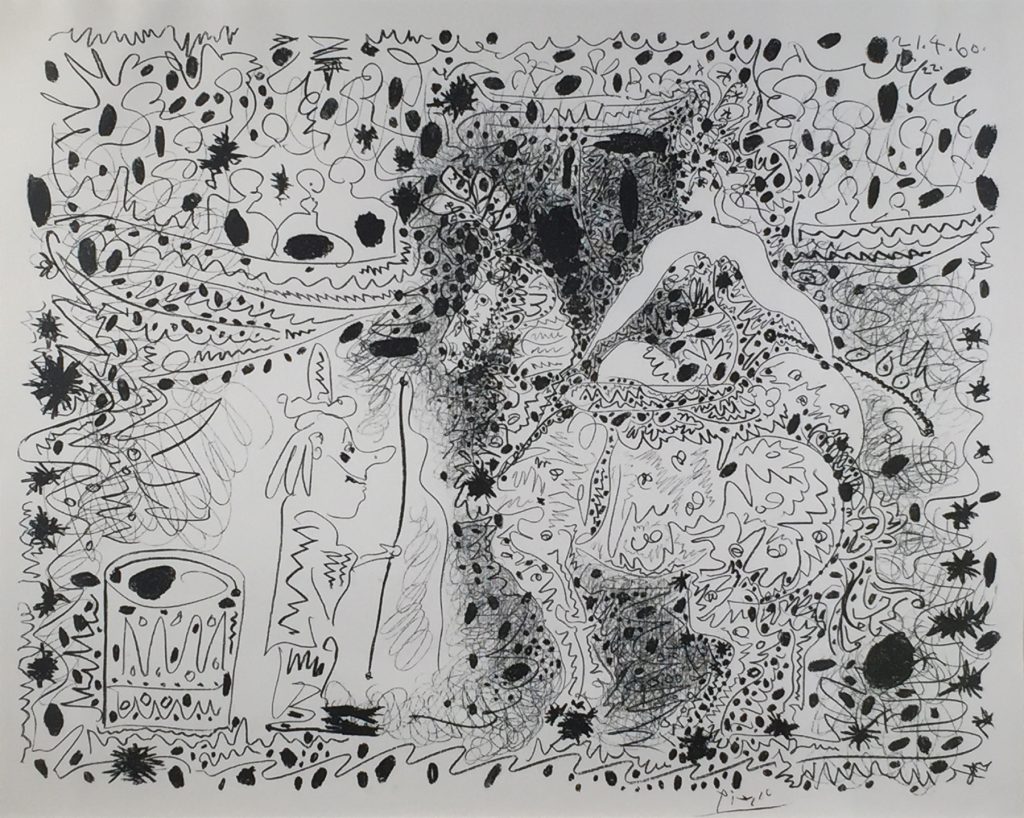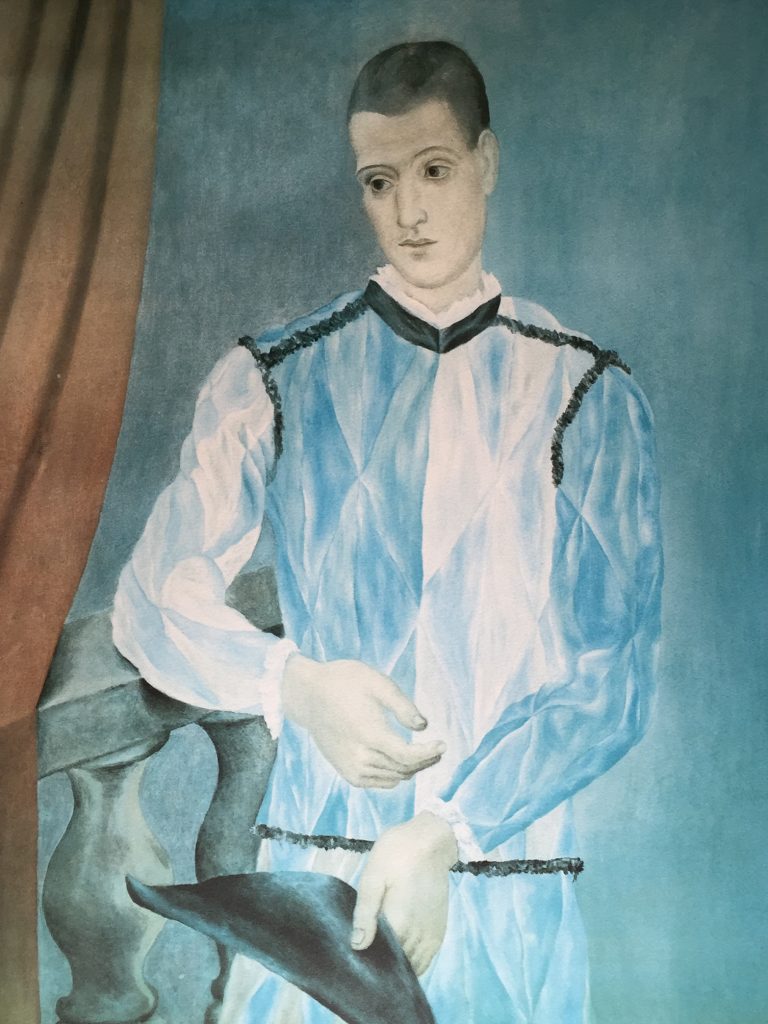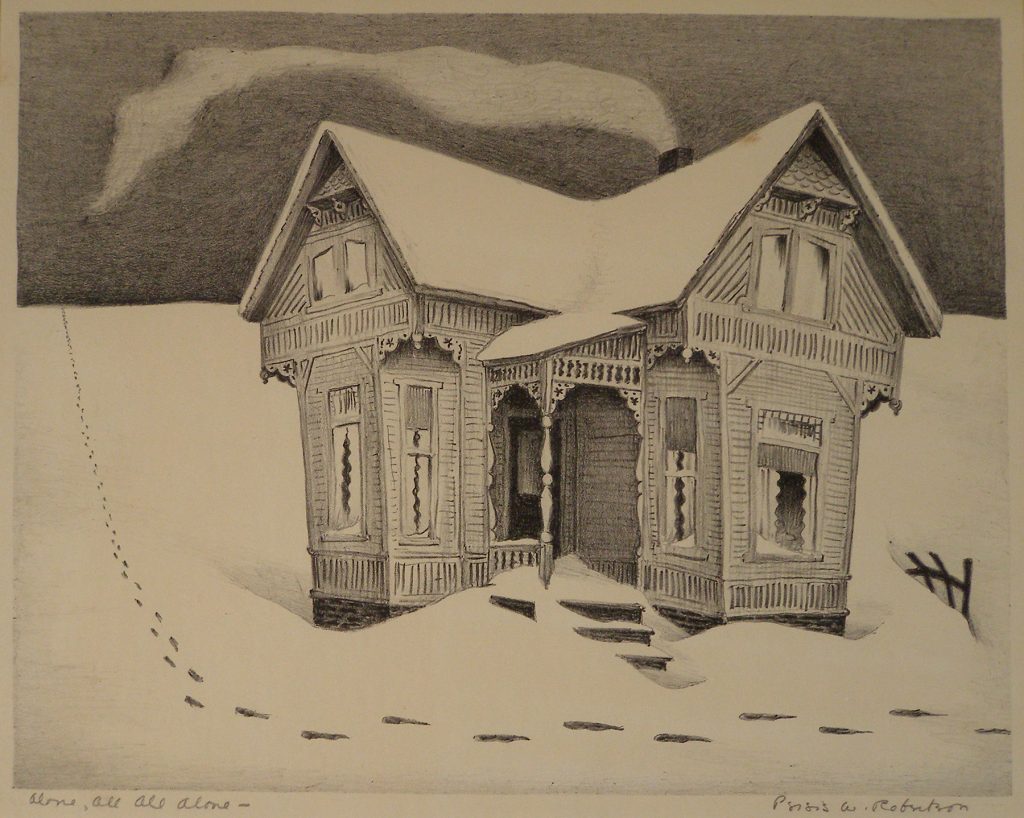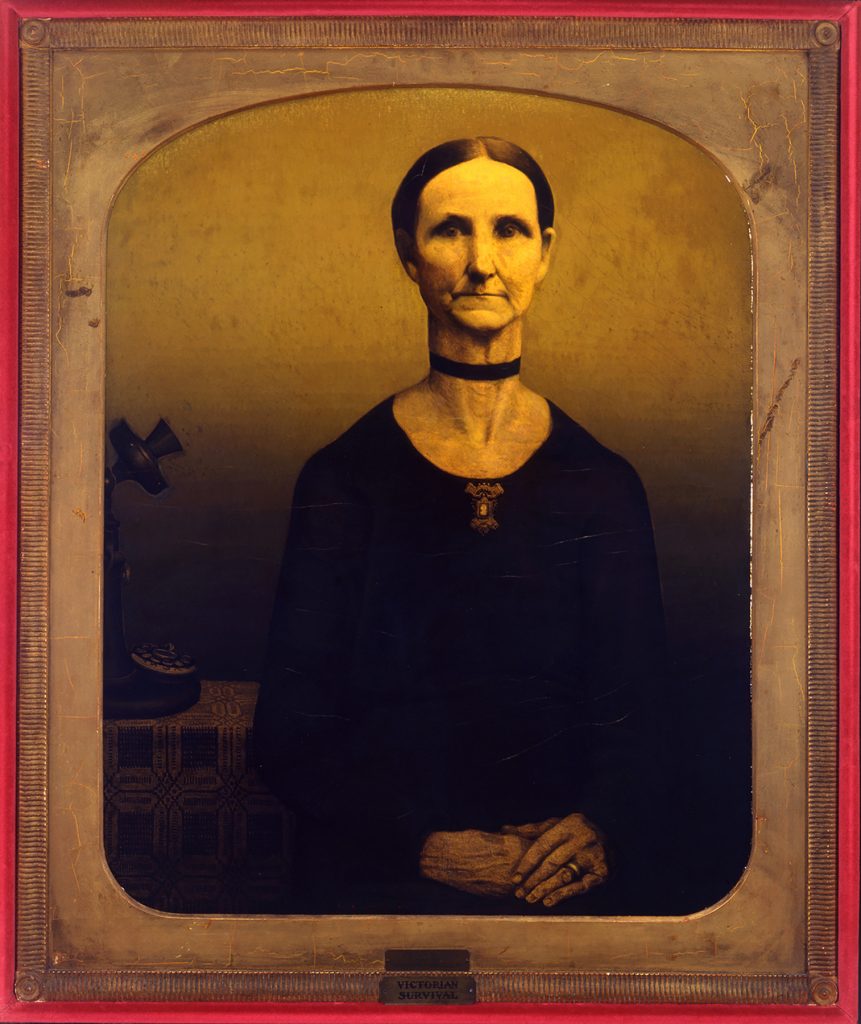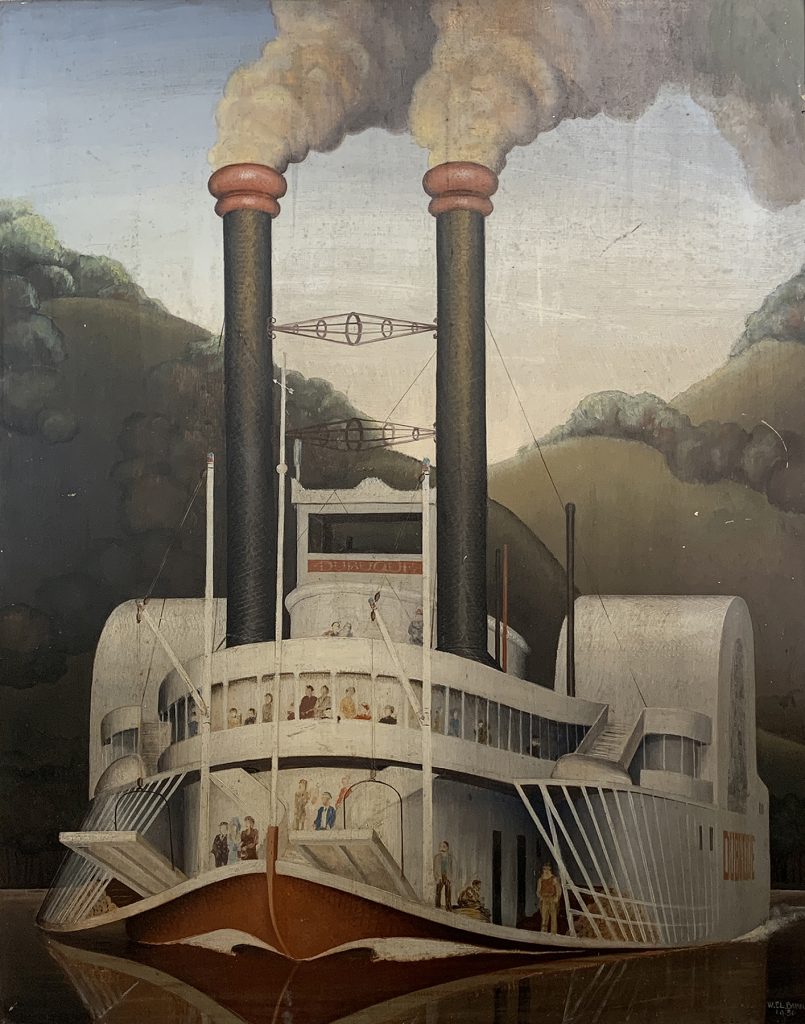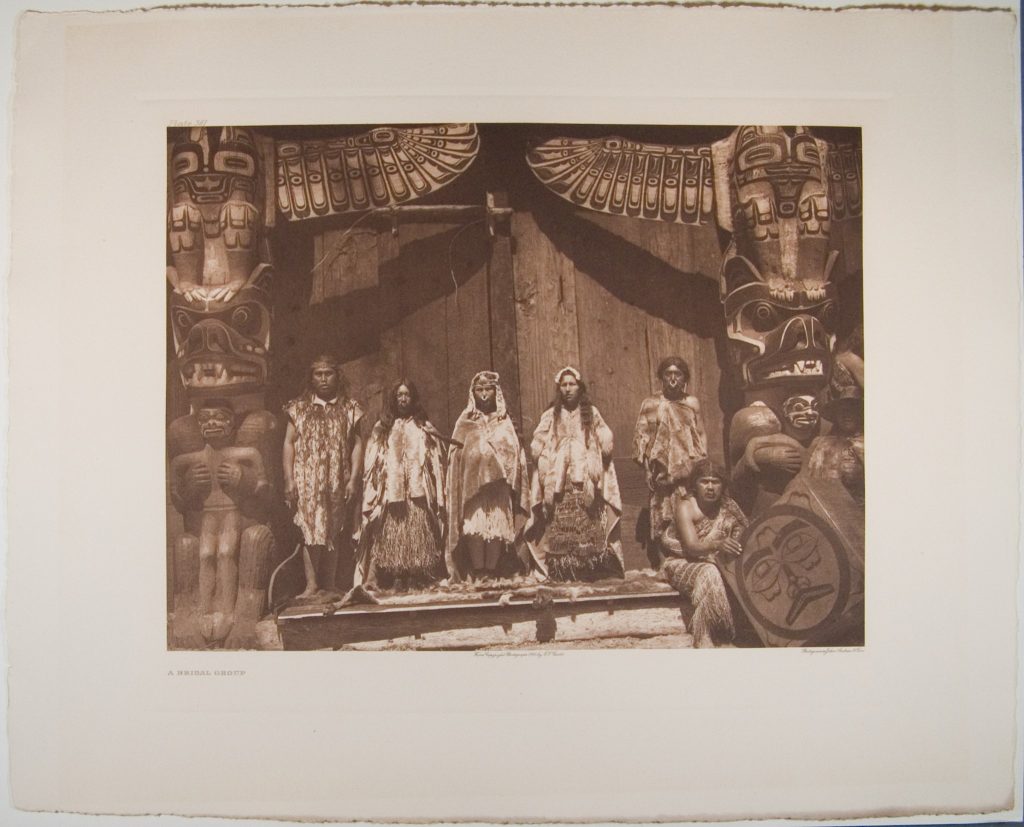
La Petite Chouett (The Little Owl), E.A. (French for Artist’s Proof), 1968
Color Intaglio on paper, 6 ⅞ x 4 ⅞ inches
Gift of Fr. Dan Rogers, 2014.7
This image of an owl is not typical of the Surrealist paintings for which Salvador Dali is known but shows a scratchy drypoint technique that appears in his late print work. Two different versions of this owl were printed in the 1960s. The first edition was the one on white paper in 1966. The full edition of this print was 106 plus artist’s proofs. The second edition was on a blue background. This edition was 200 prints plus artist’s proofs.
Born in Catalonia, Spain, Salvador Dali is instantly recognizable by his waxed, upturned mustache. Dali is one of modern art’s most distinctive figures. He is also one of the icons of the 20th century Surrealist movement, whose dreamlike images were drawn from the depths of the unconscious.
Even as a youngster he had a vivid imagination that would later define his artworks. In these, he conjured childhood memories and employed religious symbols and Freudian imagery in unexpected and often shocking pieces.
Around 1950 Dali started to move away from Surrealism, saying, “To be a Surrealist forever is like spending your life painting nothing but eyes and noses.” He developed an interest in science, religion and history and started to turn to the great classical masters of painting like Raphael, Velasquez, or the French painter Ingres for inspiration.

